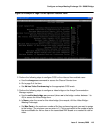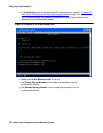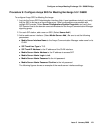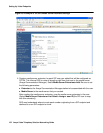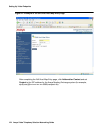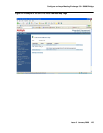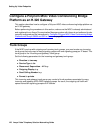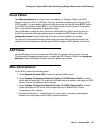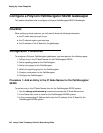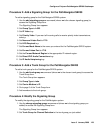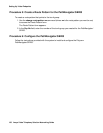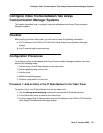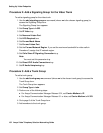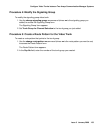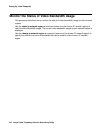
Configure a Polycom MGC Video Conferencing Bridge Platform as an H.320 Gateway
Issue 3 January 2008 127
Route Pattern
Use add route-pattern xx to create a new route pattern (a “Gateway Pattern”) per MGC
Session Profile for H.323 to H.320 calls. The user will dial the dial plan prefix and the H.320/
H.323 number. The route pattern will omit the dial plan prefix and add the string XXYY* before
the H.323/H.320 number, where XXYY is the IP service prefix and the Session Profile prefix,
and * is the delimiter required by the gateway function.
Using AAR tables, enable the user to access the AAR table via a facility code and then an
Avaya Communication Manager gateway prefix is created per MGC Session Profile. Use
change aar analysis to add a dial string and map to the route pattern you created.
The Avaya Communication Manager system does not support dial strings that contain the *
character or the # character as required by the MGC to support H.320 gateway functionality.
AAR Tables
Using AAR tables, the user accesses the AAR table via a facility code, and then an Avaya
Communication Manager gateway prefix is created per MGC Session Profile. Use change aar
analysis to add a dial string and map to the route pattern you created.
MGC Administration
On the MGC, perform the following steps:
1. Under Network Services>ISDN, create the required ISDN service.
2. Under Gateway Configuration>Session Profiles>To H.320 Session Profile, create a
profile with the matching E.164 as per the AAR table and route pattern, and assign an ISDN
service. Ensure Transcoding is set to always.
3. Under Gateway Configuration>Session Profiles>To H.323 Session Profile, create a
profile and assign the IP service that corresponds to an IP board/CLAN. Ensure
Transcoding is set to always.
4. Change the delimiter to * instead of # or vice versa (that is, consistent administration
between the route pattern and the MGC expected delimiter).



